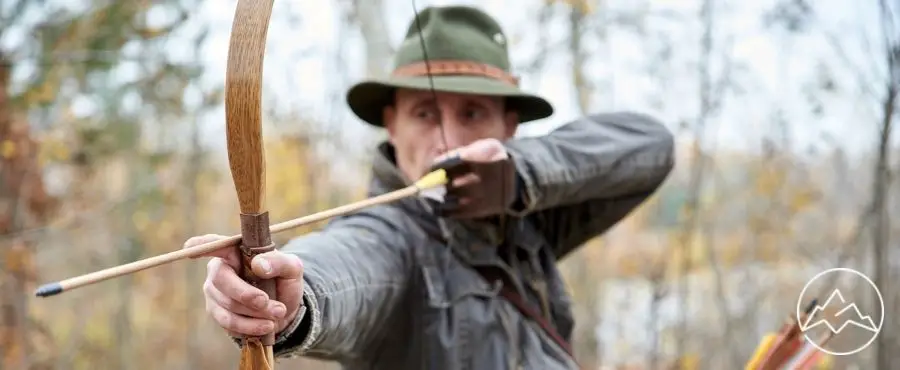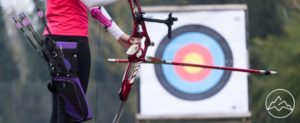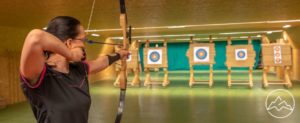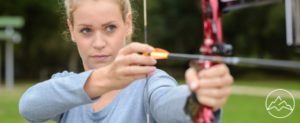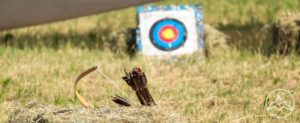Field archery, the art of shooting arrows at circular targets set at varying distances, heights, and angles, is a captivating discipline that combines precision, skill, and a deep understanding of the outdoors. In this ultimate guide to field archery, we delve into the intricacies of this ancient sport, providing a comprehensive overview of its techniques, formats, and benefits. Whether you are a seasoned archer looking to refine your skills or a beginner eager to explore the world of archery, this guide is designed to equip you with the knowledge and expertise needed to master the art of shooting. We will explore the three main formats of field archery – field rounds, hunter rounds, and animal rounds – each presenting its own unique challenges and rewards. By delving into the advantages and benefits of practicing this discipline, we aim to inspire and empower archers at any level to explore the vast potential of field archery.
Key Takeaways
- Field archery is a popular discipline in archery.
- Field archery competitions have targets with three different scoring rings.
- There are three different formats in field archery: field rounds, hunter rounds, and animal rounds.
- Practicing field archery can improve shooting skills.
What is it?
Field archery is a discipline within the sport of archery that involves shooting at circular targets of varying distances, heights, and angles, with competitions typically consisting of 28 targets divided into two sides of 14. Field archery techniques encompass a variety of skills and strategies that archers must master to achieve accuracy and precision. Beginners in field archery require specific equipment and gear to get started, including a recurve or compound bow, arrows, a quiver, and a finger tab or release aid. It is important for beginners to receive proper instruction and guidance to ensure safety and develop proper form and technique. To improve accuracy and precision in field archery, archers can focus on aspects such as consistent anchor points, proper grip, body alignment, and follow-through. Regular practice, understanding the trajectory of arrows, and adjusting for varying distances are also crucial for honing skills in field archery.
Different Formats
Different formats in the discipline of archery include field rounds, hunter rounds, and animal rounds. Field rounds and hunter rounds are similar in terms of the targets used, which consist of circular shapes with scoring rings. However, there are scoring differences between the two formats. In field rounds, the targets have a white face with a black bullseye, and archers are awarded 5, 4, or 3 points depending on the ring they hit. Hunter rounds, on the other hand, have targets with an all-black face and a small white bullseye. The scoring system remains the same as in field rounds. Animal rounds, as the name suggests, involve shooting at targets with images of animals. Scoring in animal rounds is based on hitting realistic kill zones, with different points assigned to each zone.
Benefits and Advantages
One notable advantage of engaging in the various formats of archery is the opportunity it provides for archers to experience and navigate challenging terrains, weather conditions, and distances. Field archery offers archers the chance to practice and improve their focus, as they must adapt their shooting technique to different target distances, heights, and angles. Additionally, participating in field archery competitions requires physical fitness, as archers often have to walk long distances between targets and shoot from various positions. This combination of mental focus and physical exertion not only enhances an archer’s shooting skills but also contributes to overall physical fitness. Moreover, field archery allows archers to enjoy the outdoors and appreciate nature while honing their shooting abilities, making it a fulfilling and rewarding discipline for both competition and personal enjoyment.
Frequently Asked Questions
How do I choose the right bow for field archery?
When choosing the right bow for field archery, it is important to consider various factors related to field archery equipment. Firstly, select a bow that is suitable for your skill level and shooting style. Consider the draw weight, length, and type of bow, such as recurve or compound. Additionally, choose arrows that are appropriate for field archery, considering factors like weight, spine, and point type. It is also recommended to consult with experienced archers or professionals to ensure the best fit for your needs.
What are some common mistakes to avoid in field archery?
Common mistakes to avoid in field archery include improper form and grip, lack of focus and concentration, and not adjusting for varying distances and elevations. These errors can greatly impact an archer’s accuracy and performance. Improper form and grip can result in inconsistent shots and decreased accuracy. Lack of focus and concentration can lead to missed targets and lower scores. Not adjusting for varying distances and elevations can result in misjudged shots and missed scoring opportunities. It is important to address these mistakes to improve one’s field archery skills.
Are there any specific rules or etiquette to follow during field archery competitions?
Field archery competitions have specific rules and etiquette that participants must follow. These rules ensure fair play and a safe environment for all competitors. Some common field archery competition rules include shooting from designated shooting positions, adhering to time limits, and scoring accurately. Proper etiquette in field archery competitions involves respecting other archers’ shooting space, maintaining silence during shooting, and following the instructions of the tournament officials. It is important for archers to familiarize themselves with these rules and etiquette to ensure a smooth and enjoyable competition experience.
What are some recommended exercises or stretches to improve strength and flexibility for field archery?
Exercises and stretches can significantly improve strength and flexibility, leading to enhanced performance in field archery. To increase strength, exercises such as resistance training, specifically targeting the muscles used in archery, are recommended. Stretching exercises should focus on areas like the shoulders, back, and hips to improve flexibility. Additionally, to improve accuracy in field archery competitions, archers should practice consistent form, develop a strong mental focus, and work on their breathing techniques to maintain stability and precision during shots.
Can you provide tips for shooting accurately in different weather conditions during field archery?
Shooting accurately in different weather conditions during field archery requires adjustments to aim and technique. In windy conditions, it is crucial to anticipate the wind’s direction and strength. A tip is to aim slightly upwind and adjust the sight accordingly. Additionally, using a heavier arrow can help counteract the wind’s effect. In rainy conditions, adjusting aim is necessary due to the altered trajectory caused by water droplets. Aim higher to compensate for the arrow’s decreased speed and drop.
Conclusion
In conclusion, field archery is a diverse and exciting discipline that offers numerous benefits and advantages. Whether it’s the enjoyment of being outdoors, the opportunity to improve shooting skills, or the thrill of competition, field archery provides a unique experience for archers of all levels. With its different formats and various target designs, field archery offers a challenge that keeps archers engaged and motivated. So, whether you’re a beginner looking to learn or a seasoned archer seeking a new challenge, field archery is the ultimate way to master the art of shooting.

